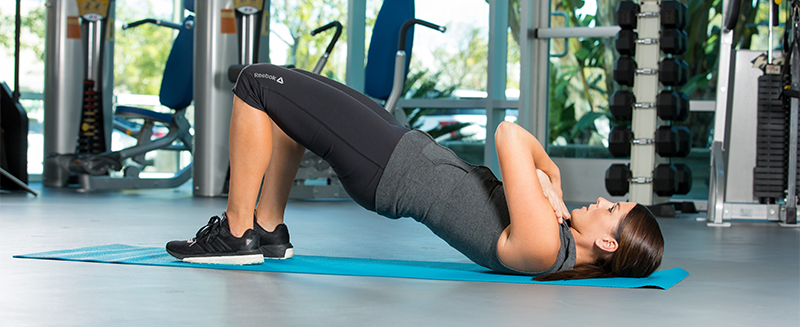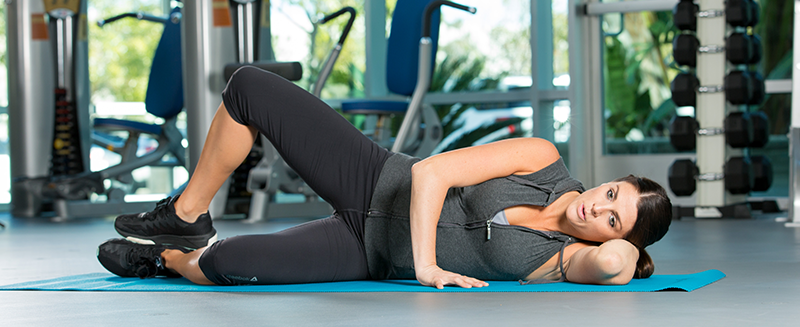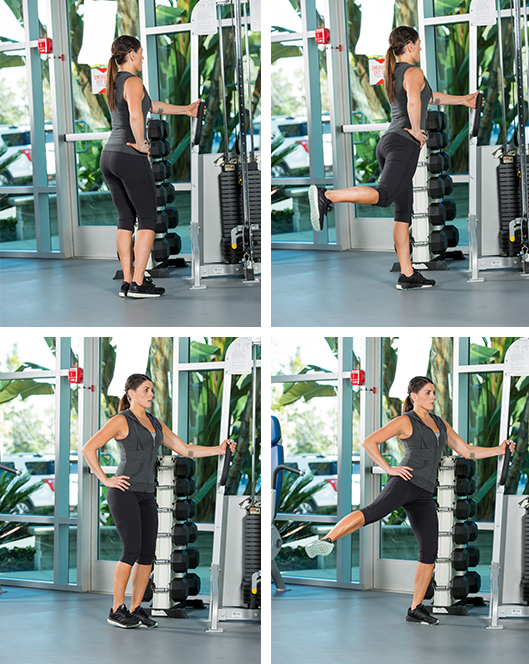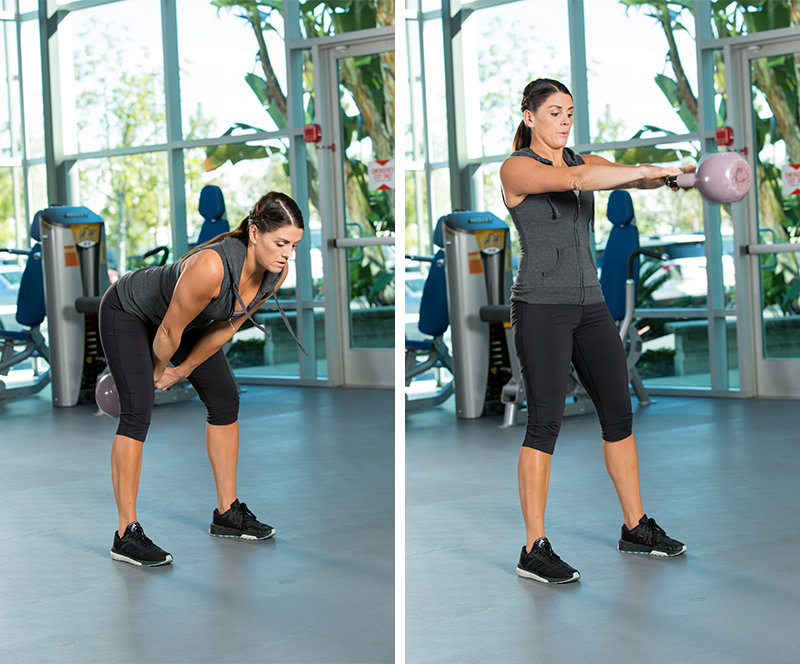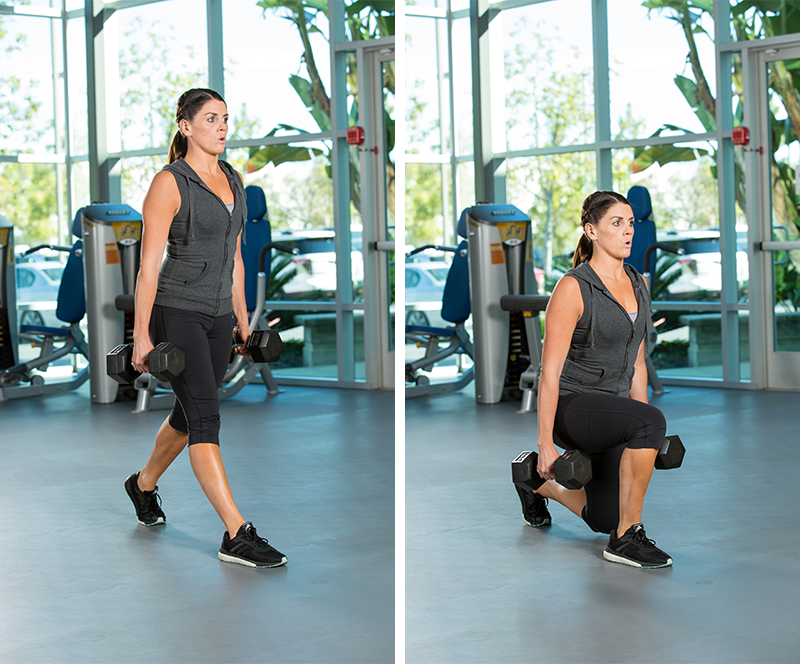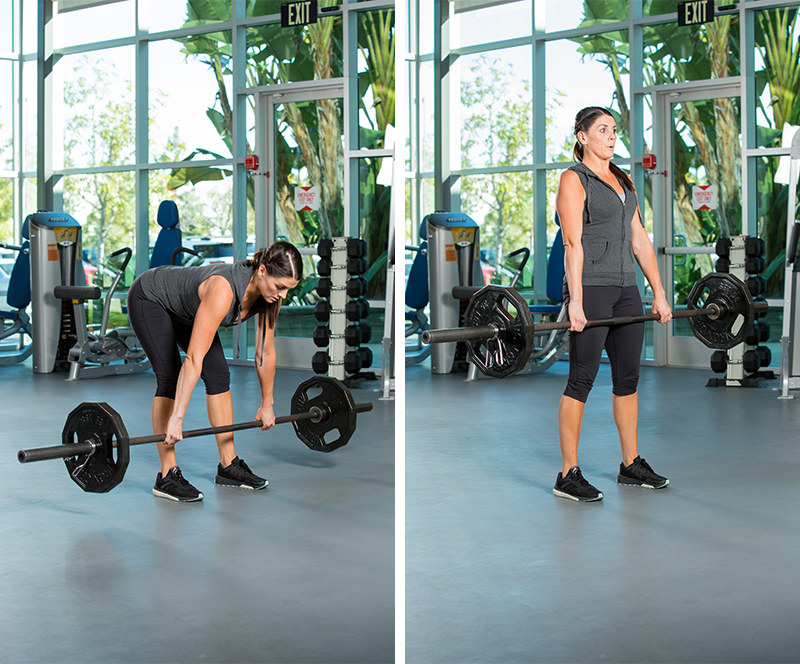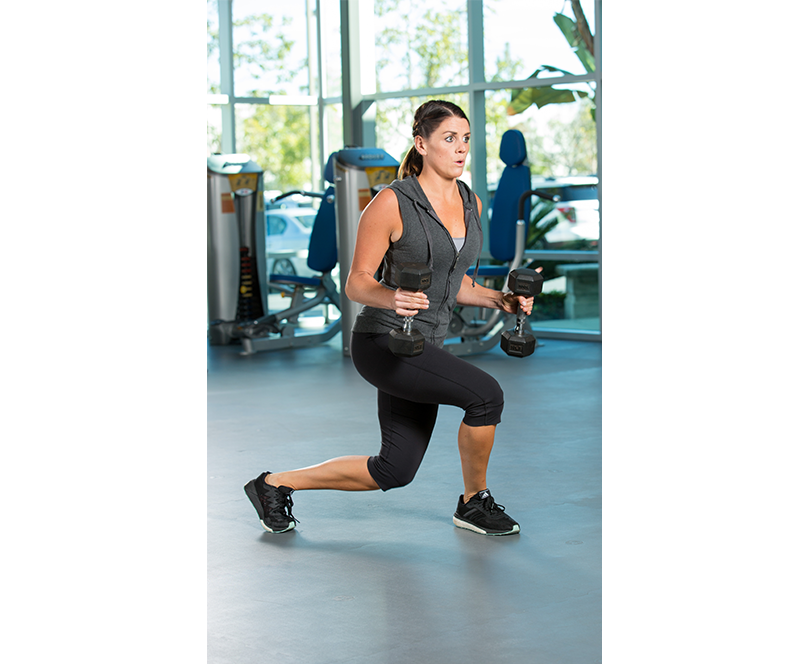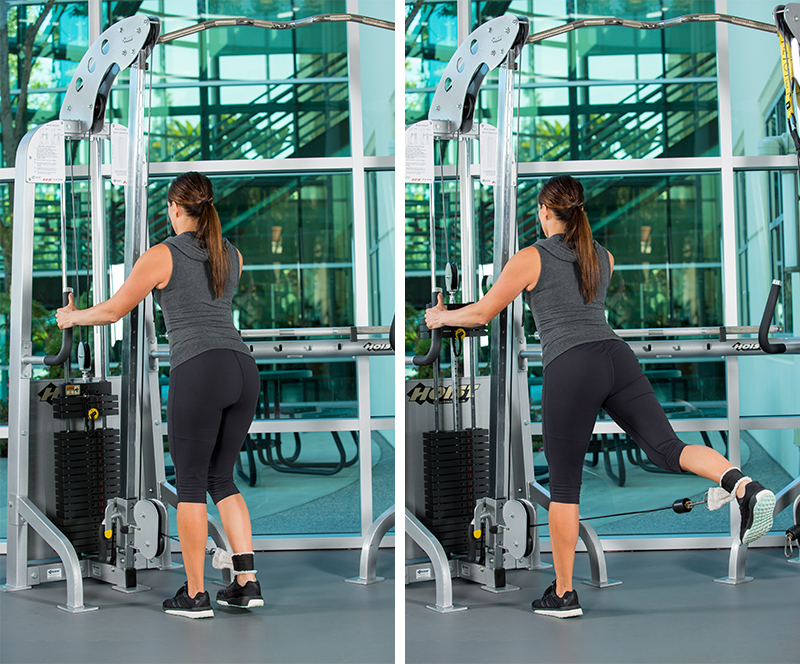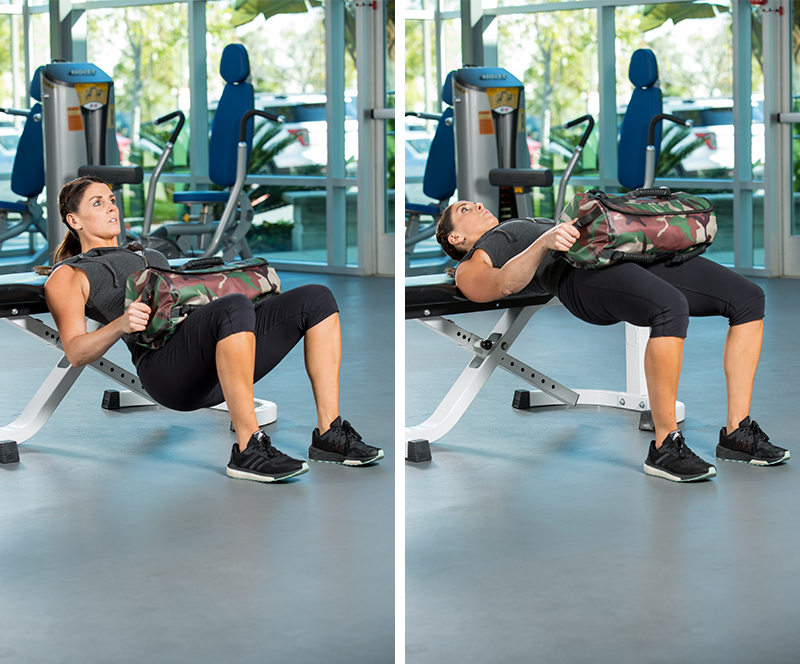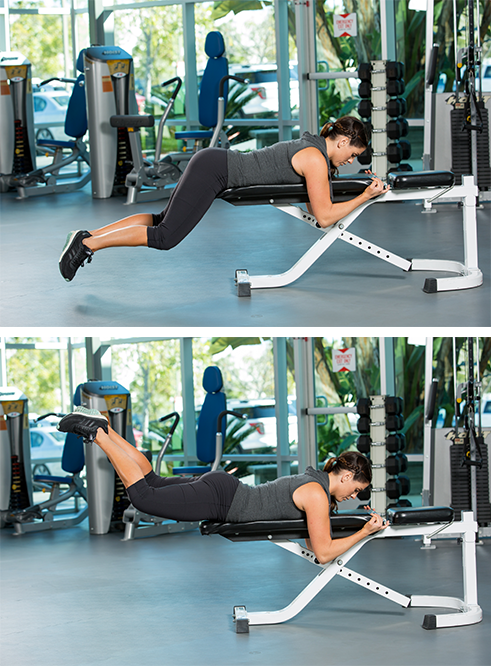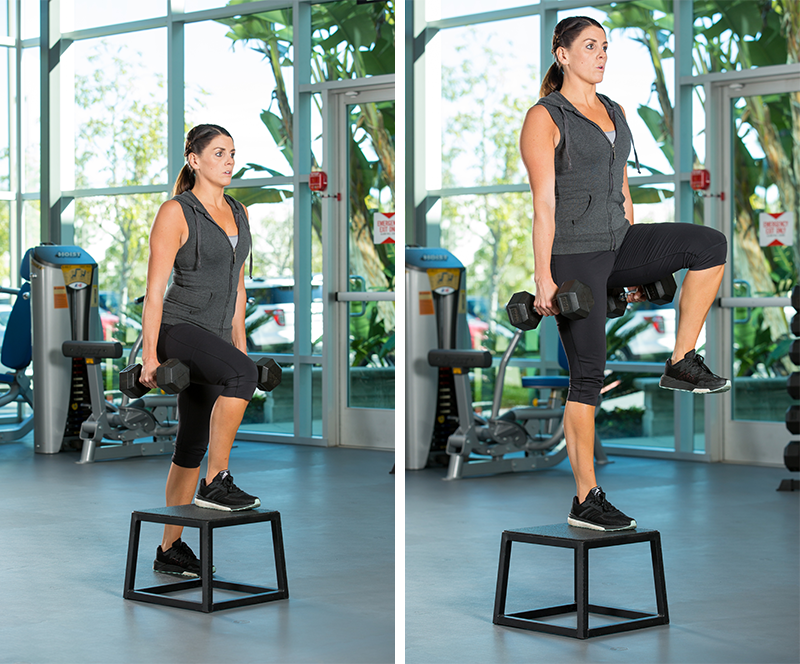|
Blog |
|
Thursday, April 05 2018
Because the quadriceps muscle group can often overpower the glutes, you want to make sure the glutes are getting the workout they deserve. Here is a simple pre-workout activation circuit to target the glutes: Hip bridgesLie on your back, bend your knees and position your feet about shoulder-distance apart. Place your arms to the side or across your chest. Raise your hips as high as possible while keeping the knees over the toes. Repeat 15-20 times.
Clam shellLie on your side with the knees bent to 90 degrees and your torso facing forward. Raise your top leg but keep the foot touching the other foot. Complete 15-20 repetitions on each side.
Hip extension and abductionsAssume an athletic-ready stance next to a wall or something secure that you can hold onto. Lift one leg back as high as possible without moving your upper body. Return to the starting position and lift the same leg out to the side (abduction) and return to starting position. Repeat 15-20 times on each leg.
The following eight exercises can be combined and modified to create a dynamic workout. You can, for example, use these eight exercises to start a client’s program but increase weight, intensity, reps or sets to create a greater challenge; feel free to add or substitute equipment when necessary (e.g., a kettle bell for a dumbbell). Begin with six to eight repetitions for each exercise and complete three to four sets. 1. Kettlebell swingsPlant feet in a wide stance and position a kettlebell 2 feet in front of you on the floor. Reach for the kettlebell with both hands; keep the legs mostly straight and maintain a flat, rigid back. Begin the movement by dragging the kettlebell back toward your feet and, in a pendulum-like motion, lift the kettlebell by extending your hips to stand, letting the kettlebell only reach shoulder height. Be sure to focus on the hip-hinge motion, not the squatting motion. The arms should not do anything other than hold the kettlebell.
2. Stationary lungeStart by staggering your legs about shoulder-width apart. Make sure that when you’re in the downward phase, your knees are at 90-degree angles (use a mirror if necessary). Lean slightly forward to keep the focus on the front leg—90% of the weight should be in the front leg; the back leg is only for balance purposes. Return to the starting split stance and slowly lower back down.
3. Straight-leg deadliftBegin in an athletic shoulder-width stance. Grasp the barbell across the shoelaces, just wider than the shoulders. Before lifting, assume a table-top posture with your torso and retract the shoulders to prevent rounding of the upper back. The first upward movement should come from the hips extending and then the knees to standing. Try to lower back down by initiating the movement with the glutes shifting back, while keeping the knees slightly bent. Attempt to lower the barbell to the floor, but stop if you notice the back rounding or your form breaking down.
4. Curtsy lungeBegin standing with a wide stance and then cross the left leg behind the right to mimic a curtsy. Keep the shoulders drawn back and chest upright. To perform this movement correctly, be aware of the knee shifting during the lowering phase. Aim to keep the knee aligned closely to the heel so there isn’t extra strain on the joint. From the lowered position, push the body up to standing while simultaneously bringing the back leg forward to the starting wide-stance position and then crossing the other leg behind.
5. Single-leg cable extensionBegin by lowering the cable to the lowest pin and attaching a cuff securely around one ankle. Stand facing the anchor in an athletic-ready stance and hold onto the handles or a secure pole. Slowly raise the heel by initiating the movement from the glutes and continue to isolate the gluteus maximus until you cannot lift your leg anymore, all while keeping an erect torso. Return to starting position and repeat.
6. Bench hip thrustersUsing a standard weight bench, begin by positioning your shoulders on the bench and the feet shoulder-width apart on the floor. Depending on whether or not you want to add weight, you can place your hands on your hips or across your shoulders. Initiate the movement by squeezing the glutes until the hips are even with the knees and shoulders. Return to the starting position and repeat.
7. Hip extension on benchLie face down on a standard weight bench or stable surface and align your hips with the edge. Grasp the bench and keep your neck in a neutral position. Beginning with your toes resting on the floor and a slight bend in the knees, engage your glutes to raise your heels toward the ceiling. To increase the challenge, bring your heels together in a “frog-like” position, making sure to focus on extending at the glutes and not the lower back. Return to the starting position and repeat bringing the toes toward the floor, but lift back up immediately after contact.
8. Side step-ups (with optional plyometrics)This exercise requires a 12” to 24” gym box, bench or step. Stand to the side with one foot on top of the box and the other foot on the floor slightly staggered behind. Starting in a runner’s position with arms at 90 degrees, use the top leg to step up. Make sure to let the glutes to do most of the work and don’t let the quads or the other leg take over. Consciously isolating your gluteal muscles will make a big difference in the effectiveness of these exercises, as quad-dominance and lumbar-dominance are common issues. Loading the gluteals for the first 10 to 15 degrees during the initial phase will help you avoid relying on the surrounding muscles and achieve the strong rear-end your body deserves.
|

